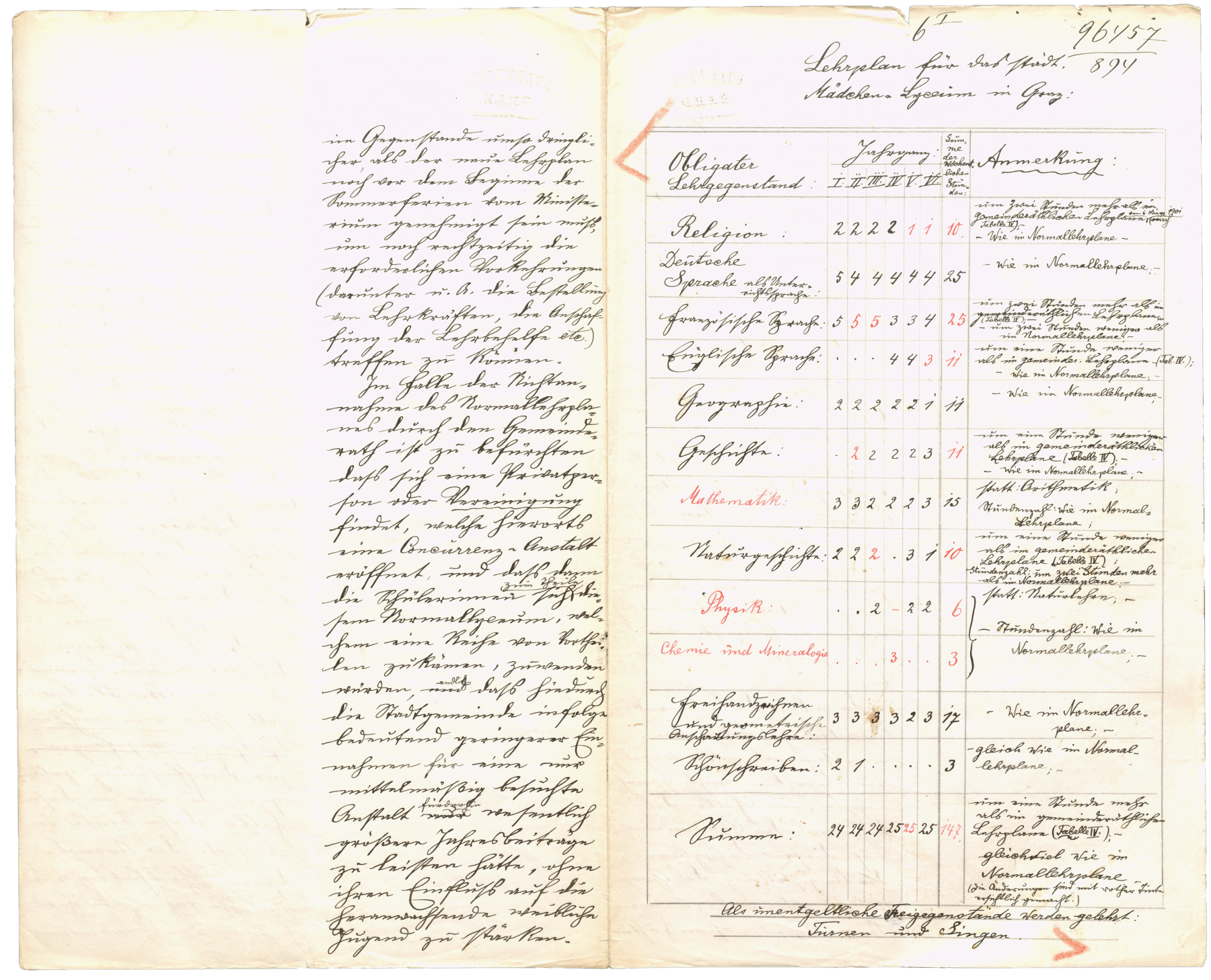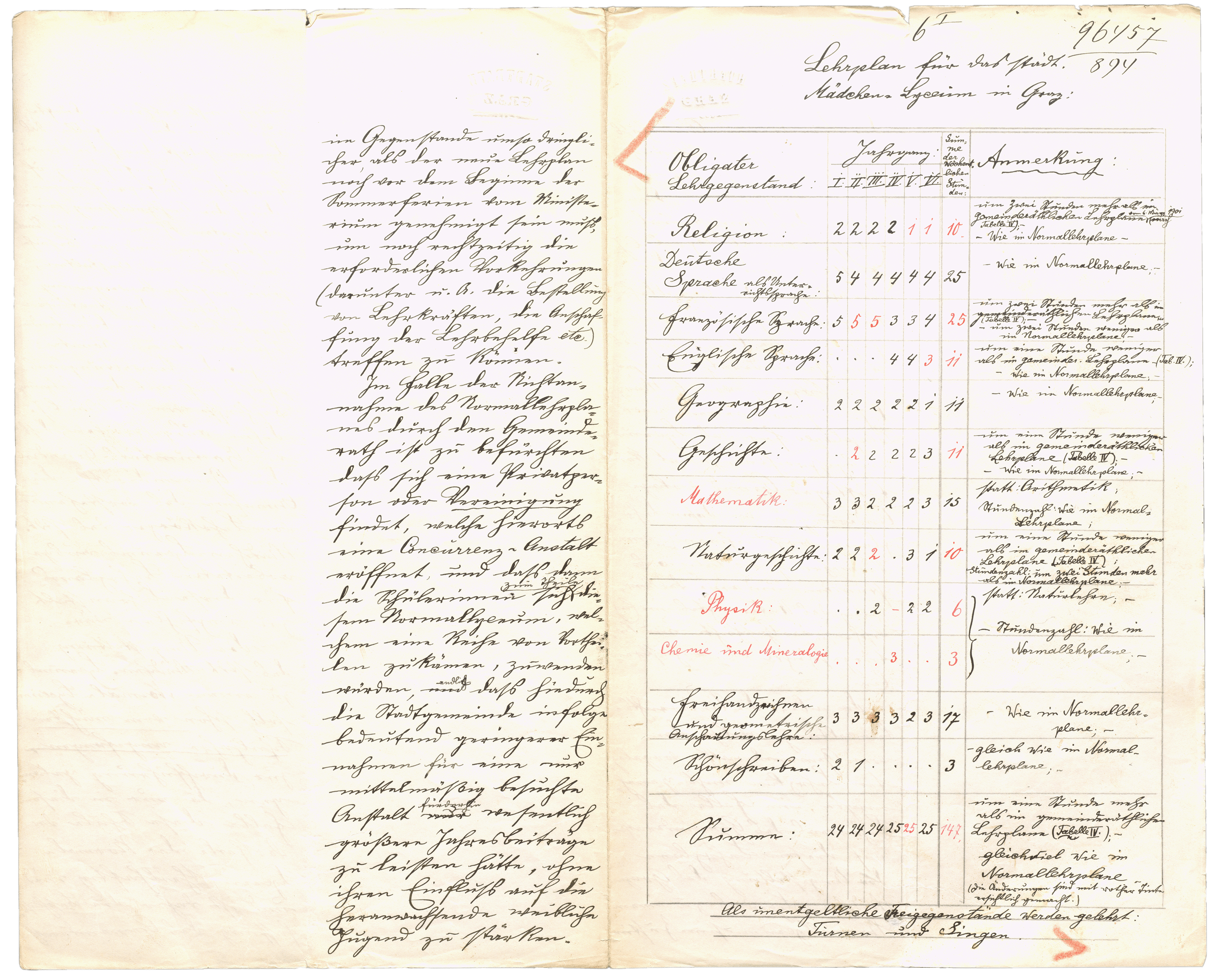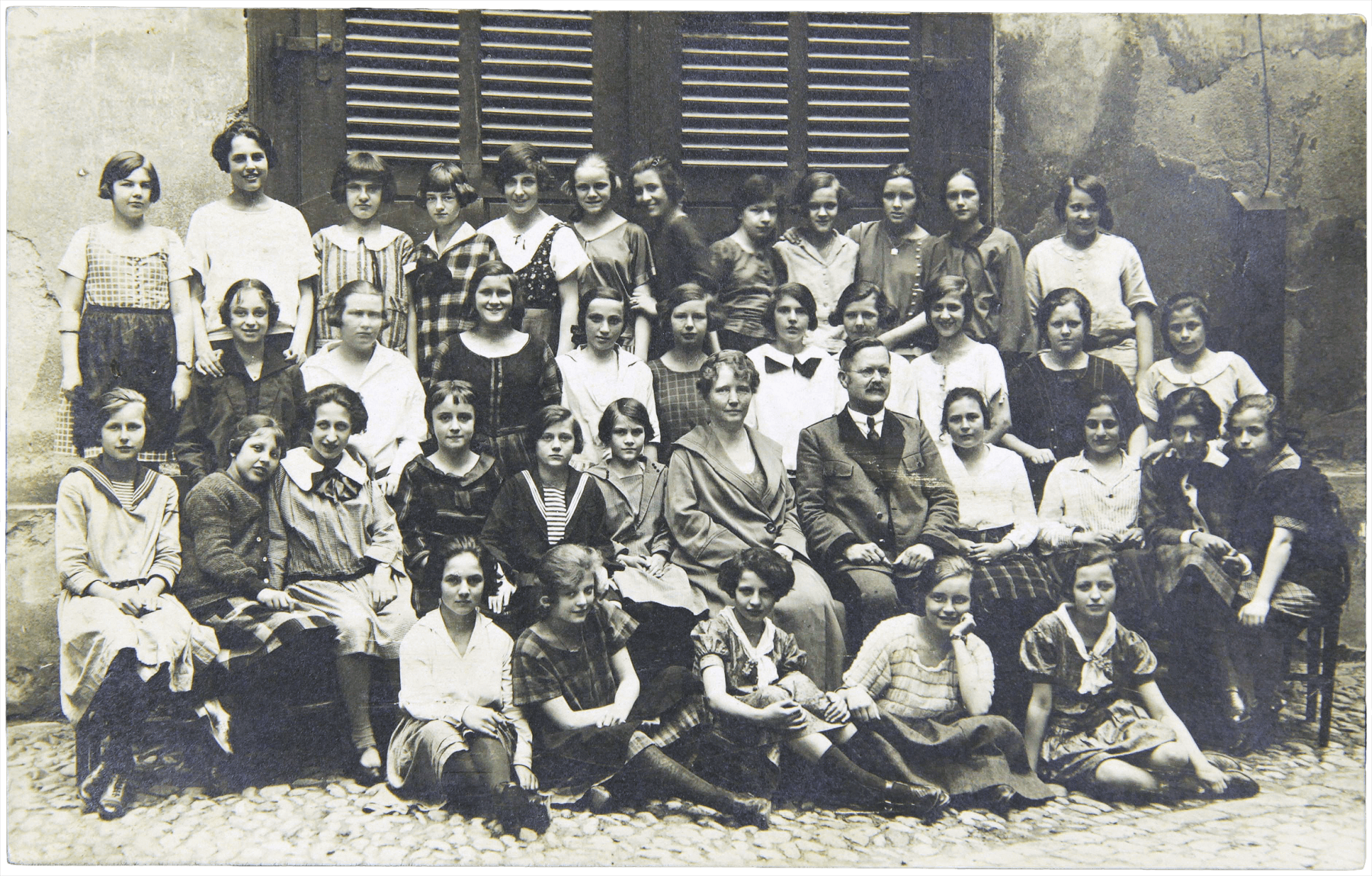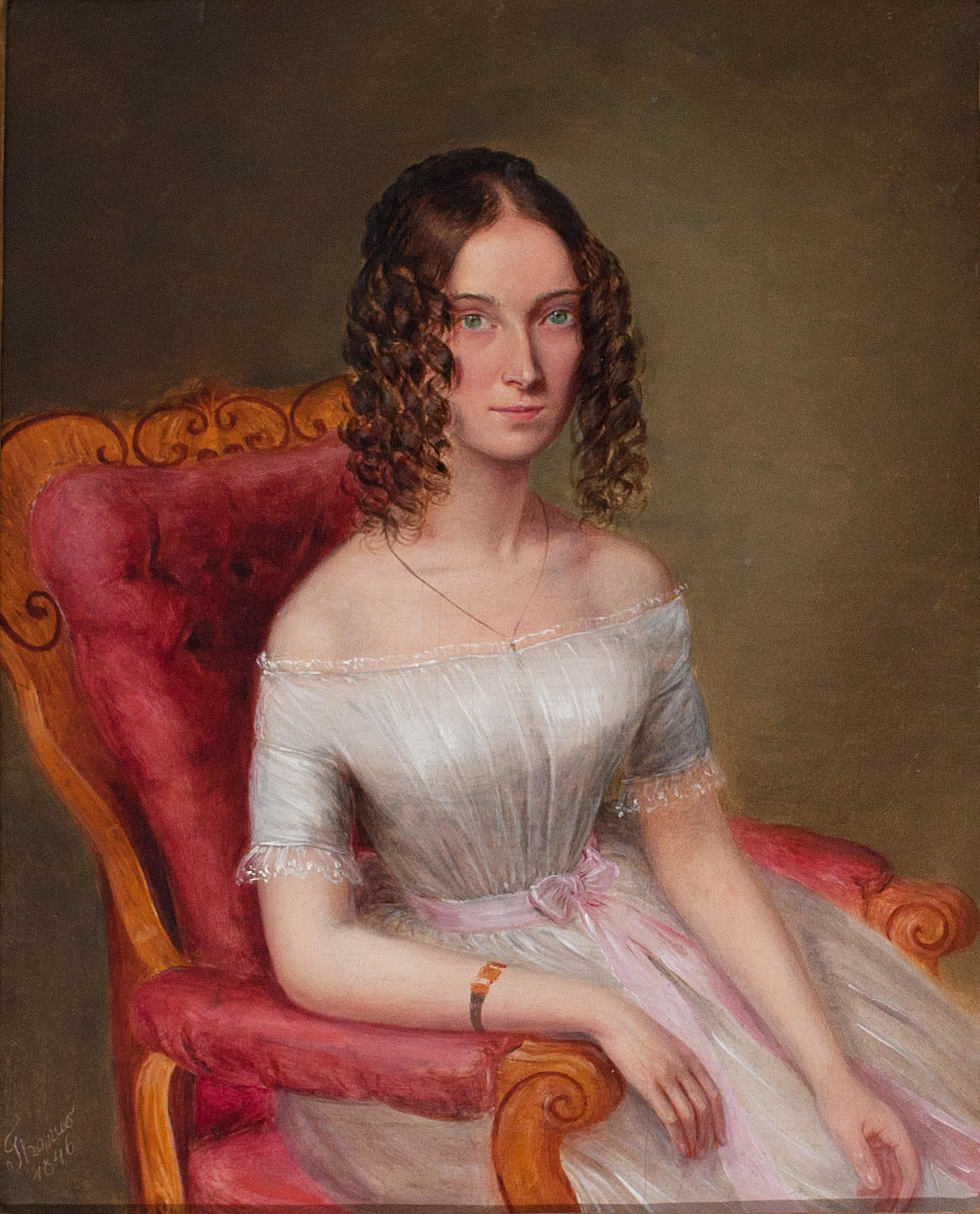

Curriculum of the Girls’ High School 1901
Equal Opportunities through Education
In 1873, the sexennial girls’ lyceum became the first of its kind within the Danube Monarchy to start its work. In the curriculum, emphasis was deliberately placed on a humanistic education. Nevertheless, the lyceum provided an occasion for public discussion, and acceptance of the training for university studies remained difficult. It was not until 1897 that women graduates were allowed to study at universities as non-degree students, and in 1912 the school was given the same status as boys’ grammar schools. Between 1876 and 1938, the school was housed in Sackstraße 18, the building of today’s GrazMuseum.
Ink on paper
34 × 21 cm
Lender: Municipal Archives Graz
Municipal Archives Graz
Girls’ Education at Palais Khuenburg
In 1873, 74 schoolgirls from wealthy families enrolled at the private Girls’ Lyceum, which was originally located in Kaiserfeldgasse. The monthly school fees were high. Nevertheless, the demand was so great that the school had to move to the larger Palais Khuenburg in Sackstraße 18 in 1876. In 1885, the private school was transformed into a state school. From 1902, the graduates were allowed to take the school-leaving examination as external students at a boys’ grammar school. 10 years later, the Girls’ Lyceum was granted “normal status” including an officially accepted school leaving examination. As from 1938, it moved to the Ursuline Monastery and Sacre Coeur Monastery, and to the Lichtenfels Grammar School when the war was over in 1945. In 1967, a new building was erected in Seebachergasse, where the lyceum was run as a girls-only school until 1978.
The First Women Students in Styria
Oktavia Rollet was a graduate of the girls’ lyceum and one of the first women to complete her university studies in Graz. As from 1897, women were accepted for a course of study at the Faculty of Philosophy, and at the Faculty of Medicine as from 1901. It was not until 1919 that women were allowed to study at the University of Technology Graz. Just like Maria Schulmeister, Oktavia Rollett, the daughter of the Rector of the University, was one of the first regular women students in Graz in 1900. In 1905, she finished her medical studies with distinction and was the first woman in Styria to become a practising doctor. Aigner-Rollett often also treated her patients free of charge and was active in numerous associations of the bourgeois womens’ movement.
Practice sign of Dr. Oktavia Rollett
Gold-plated glass painted in reverse glass technique
Styrian State Archive

